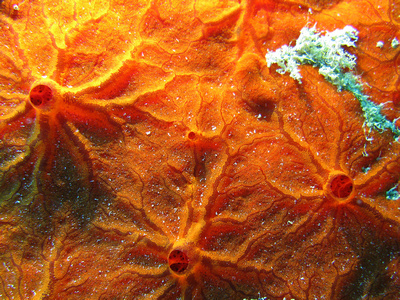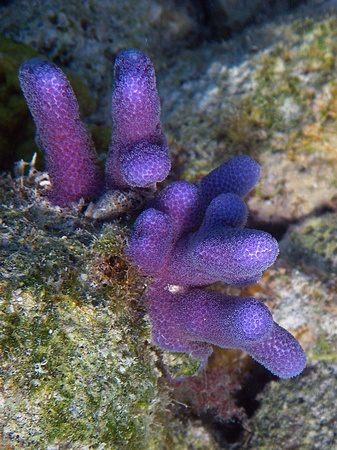Underwater Photography tips and tricks


My friends and acquaintances that are avid divers all take an interest in underwater (UW) photography, to one degree or another. I think it's simply a desire to show outsiders what an amazing place the ocean can be. I assume if you are reading this you have a desire to either start in or improve your underwater photography. My goal is to help you do just that.
Underwater photography can be broken down into it's most essential components. Photographic equipment selection, dive location, understanding the unique challenges of the photography and how those are different from photos taken above the water line (the environment), and the skills required to pull off a successful dive shoot. In this Blog I'll cover some of the basics to help get you started. Let's begin with equipment selection.
Underwater Photographic Equipment Selection
Although the equipment by itself doesn't make the shot, it can certainly go a long way towards achieving the quality level that you desire. The first step is to identify for yourself the quality of images that are acceptable to you. When asked, I often suggest new UW photographers consider the purchase of something like the very versatile Canon PowerShot G16 and a compatible UW Housing from MegaGear. Combined these two items will come in at under $1100 Canadian, and under $850 USD for our American cousins. A reasonable outlay given the remarkable image quality that can be achieved with this setup.
UW photography begs for at least one flash, preferably two. One of the primary reasons for this is that light, and specifically certain spectrums of light, are filtered out by the water as you go progressively deeper. Even at 40' much of the red spectrum of the sunlight has been filtered out, so natural colors are not possible without the aid of a good flash. There are many options on the marketplace, so try a Google search to find something that fits your budget.
With a basic setup, camera, housing and strobe, you can begin to create photographs that will amaze your friends and family.
 Puffer FishEvening sleepiness made this little guy quite docile on this night dive.
Puffer FishEvening sleepiness made this little guy quite docile on this night dive. 
Shot with a Canon G9 and a Canon UW housing.
Dive Locations
Ask three divers what their favorite dive locations are and you will get three different answers. When it comes to photography though, there are a couple of things to keep in mind.
First, how clear is the water at your chosen dive location. This can make a huge difference to the quality of your shots. Some locations experience seasonal turbidity issues, so knowing what to expect before you sign up can be advantageous.
The second consideration is how strong are the currents. If most of the excursions are drift dives with a current greater than about 2 knots, your chances of getting a good photograph drop significantly. Select a dive location that typically has lower currents.
Next you might want to consider the water temperatures at your destination. UW photography often calls for a slow and patient approach, which translates into less physical exertion, and therefore cooler body temperatures. An alternative is to bring along a thicker wet suit and possibly wearing a t-shirt underneath to offset the cooler temperatures.
Finally, finding a dive operator that accomodates UW photographers can be more difficult that one might think. Some operations are focused on large groups of inexperienced divers, a recipe for disaster when it comes to creating a photograph. My advice is to reach out to the operators that are of interest to you and enquire about their facilitation of divers who are primarily interested in UW photography. If they don't provide this service then save your disappointment and select an operator who does.
The Environment
As mentioned earlier, the depth of your dive has a huge impact on the colors, quality of light, and quantity of light available for photography. Selecting either a shallow dive (less than 30') or having UW strobes will help you bring home those pictures you are proud to show to your audience.
Another consideration is the current or surge (especially at shallow depths). In todays world, holding on to the sea life to anchor yourself for a shot is frowned upon. Therefore it's imperative that your dive location is fairly well protected from the naturally occuring currents and that you can get your shots without disturbing the marine life.
Turbidity, or the lack of clarity in the water is normal. First time divers are often surprised at how difficult it is to see beyond 100' horizontally. This is due to many factors, and some dive locations are fortunate enough to have low turbidity levels most of the time. One factor that can have a significant influence over the turbidity is seasonal rains and storms. The visibility below the surface can drop dramatically within a very short period of time after a squall has passed overheard. Time your trip so that it avoids the worst of the seasonal poor weather. Your above surface experience will be much better as well.
Finger Coral shot in the waters of St. Lucia
Underwater Photographic Skills
One of the most important skills you can learn as an UW photographer is proper buoyancy control. Learning how to hover over your subject effortlessly will go a long ways towards shooting high quality images. My suggestion is to go to the local swimming pool (one with a deep pool, roughly 20-25 feet) and bring your camera gear with you. Pick a point on the bottom or side of the pool, and learn how to control your buoyancy and breathing while in a controlled environment. Once you are in the field at your chosen dive site you will be grateful for the practice you got beforehand.
Another very useful skill is the ability to clear your dive mask effortlessly. Being able to see clearly is crucial to finding subjects, and being able to focus on them properly. Dive masks will and do fog up periodically, so learning to clear them as needed is going to help you get those stellar shots. If you are having trouble with this skill then the place to practice is with a certified dive instructor before you leave for your dive destination.
Finally, learning a little bit about the marine life that you anticipate encountering can be very helpful. For instance, knowing that cleaner shrimp will crawl inside the gills of Parrot fish to clean parasites will help you get those interesting shots. The behaviours of the marine life, their preferred habitat, and their social interactions with other species is all quite interesting. Research those creatures you think you will encounter, and this will give you a distinct edge over other divers.
Although this list is not exhaustive, it may help spark your creative juices in preparation for your next dive adventure. Here's to your next safe and enjoyable dive adventure, with many phenomenal images.
